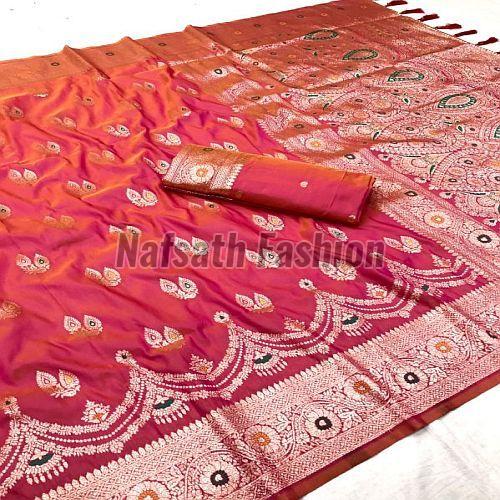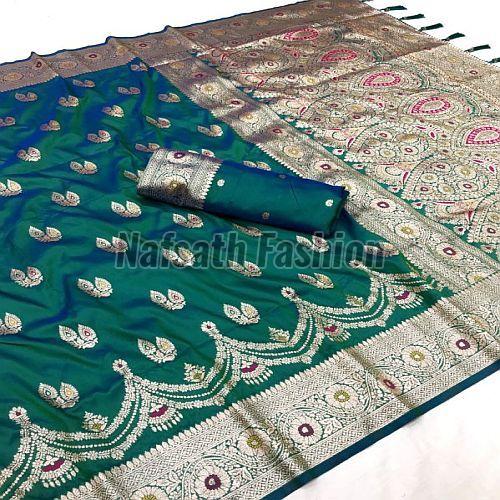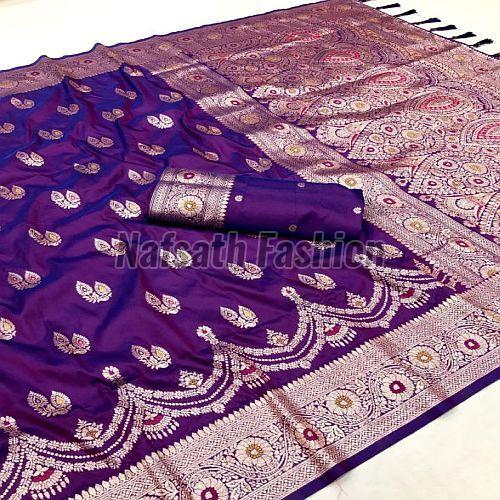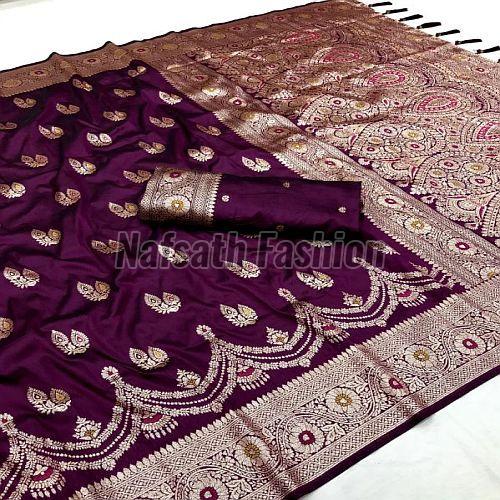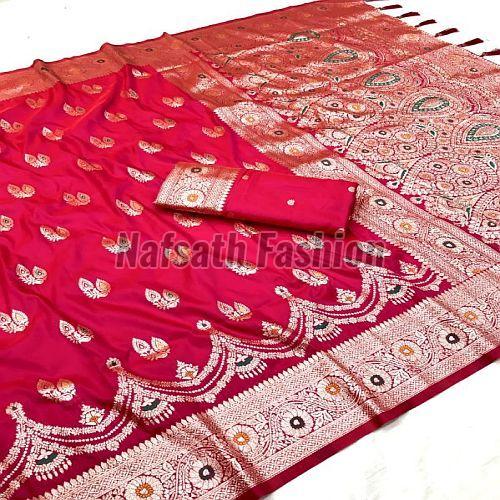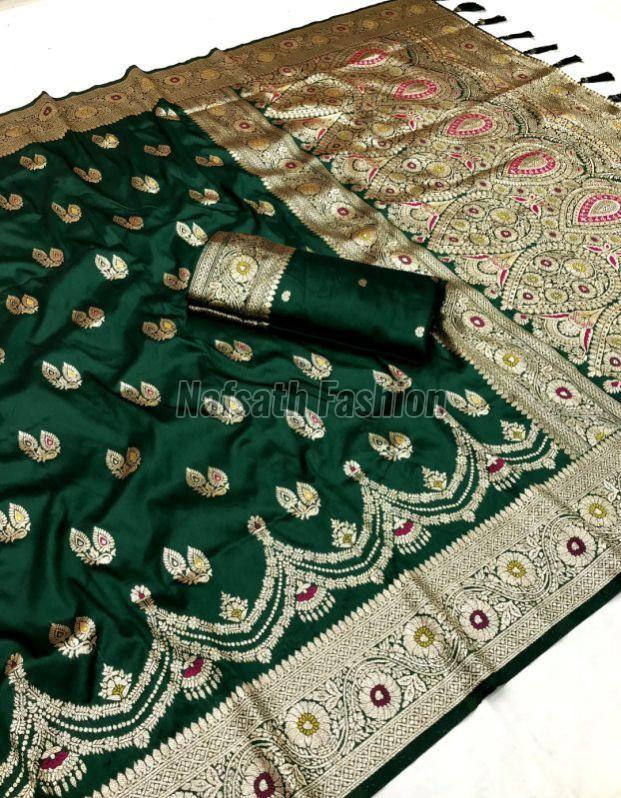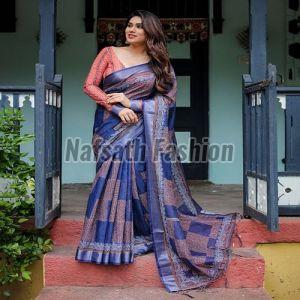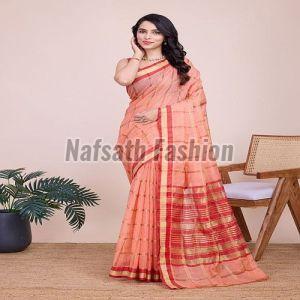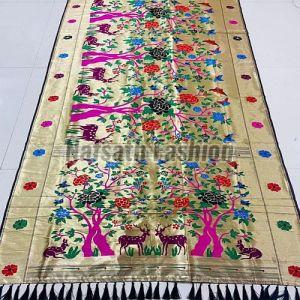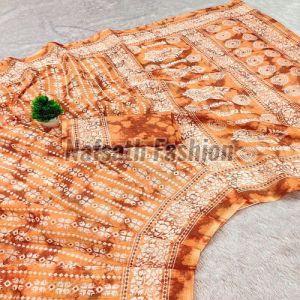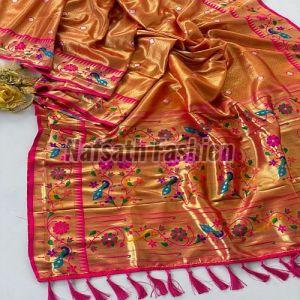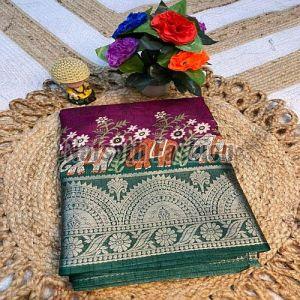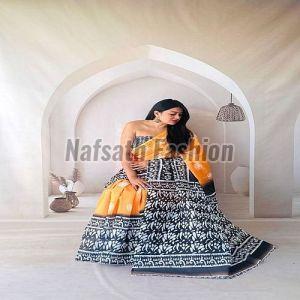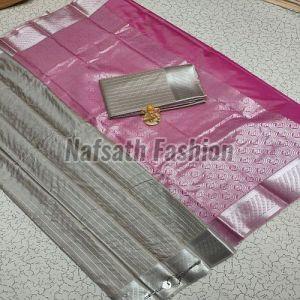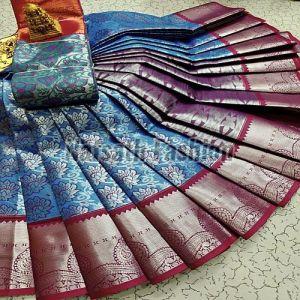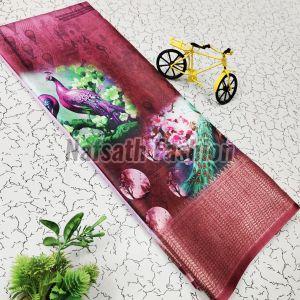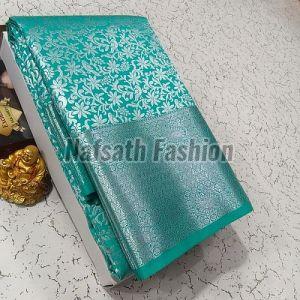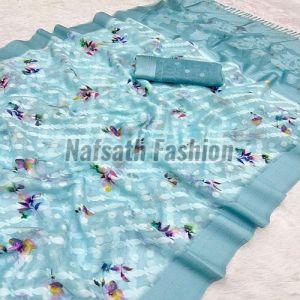GST NO. : 33BGNPN4798L1ZJ
| Business Type | Exporter, Supplier, Retailer, Trader |
| Set Content | With Blouse Piece |
| Pattern | Designer |
| Wash Care | Machine Wash |
| Click to view more | |
Product Details
Feature
Shrink-Resistant
Material
Pure silk
Color
Various Traditional Colors And Designs
Handloom Banarasi sarees will have floats (loose threads) on the back, where the design is woven in. Machine-woven sarees have a smoother finish.
- Examine the Zari: Real zari (gold or silver) might show a reddish (for gold-coated silver) or silver thread underneath when lightly scratched. Imitation zari may reveal white or plastic threads.
- Look for Pin Markings: These are small holes on the selvage (edges) of handloom sarees, used to secure the fabric on the loom.
- Feel the Texture: Pure silk is smooth and has a natural sheen.
- Inspect the Design: Look for traditional Mughal-inspired motifs like Amru, Ambi, and Domak, as well as intricate floral and geometric patterns.
- Check for a Plain Silk Patch: On the pallu, there might be a 6-8 inch section of plain silk before the main design begins.
- GI Tag: Authentic Banarasi sarees may have a Geographical Indication (GI) tag, ensuring they are produced in the designated regions around Varanasi.
- Price: Pure Banarasi silk sarees with intricate zari work are usually more expensive due to the quality of materials and labor involved.
- Burn Test (Use with Caution): A pure silk thread will burn like hair, leaving brittle ash. Synthetic threads will melt and smell like plastic.
- Seller's Authenticity: Purchase from reputable stores or verified online platforms.
Looking for "Beautiful Banarasi Weaving Silk Saree" ?
piece

